[Bitcoin's Trajectory] - Crypto Academy S4W5 - Homework Post for professor @imagen
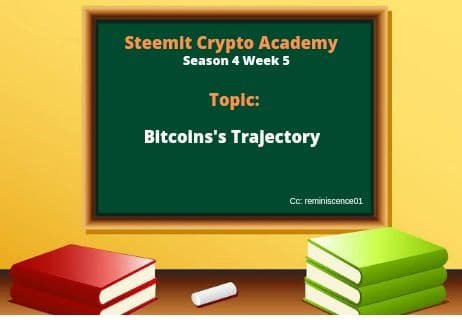
Hello Steemians, greetings to you all. This week prof @imagen lesson was centred on the history of cryptocurrency and its growth since then. It was an interesting and enlightening study, and I will be doing the homework task given.
Question 1: How many times has halving been performed on Bitcoin? When is the next one expected? What is the current amount that Bitcoin miners receive? Name at least 2 cryptocurrencies that perform or have performed halving.
Halving In Bitcoin
Halving is a term used in the crypto world to describe the reduction in half of the reward received by miners for the verification and creation of new blocks added to the blockchain. This is done to reduce the rate at which more coins get into the circulating supply of coins to prevent adverse effects like inflation.
In the Bitcoin blockchain, the verification of transactions is done through mining. Mining requires the use of computational machines to help solve the complex cryptographic function Hash that will be used in verifying the block and transactions present in it. Miners compete to validate these blocks, and the miner who succeeds in validating a block gets rewarded with Bitcoins.
Initially, the reward received by miners on the bitcoin blockchain is 50 BTC. Still, due to the halving that occurs after every 210,000 blocks added to the blockchain, the present block reward is 6.25 BTC, estimated to occur every 4 years.
Halving in Bitcoin has occurred 3 times already.
The first halving occurred on the 28th of November 2012, after 10,500,000 BTC were mined, and the first 210,000 blocks were added to the bitcoin blockchain. After that, the block reward was halved, and it became 25 BTC from 50 BTC.
The second halving occurred on the 9th of July 2016, approximately 4 years after the first bitcoin halving. The block reward halved to 12.5 BTC.
The third halving happened last year on the 11th of May 2020. The block reward was reduced to 6.25 BTC per block added to the blockchain.
Bitcoin Next Halving
Bitcoin Halving occurs after every 210,000 blocks mined, and it takes about 10 minutes to mine a block. From calculations, it will take about 2.1 million minutes for the net halving or about 4 years from the last halving for the next bitcoin halving to occur. The year 2024 is the expected year for the next bitcoin halving, and it will bring the block reward to 3.125 BTC.
Current Block Reward
The current block reward received by miners for mining blocks on the bitcoin blockchain is 6.25 BTC.
Cryptocurrencies That Have Been Halved.
A couple of cryptocurrencies have been halved, and I will be looking at 2 of those.
Verge (XVG)
Verge is a privacy coin initially named DogeCoinDark, was launch in 2017 and experiences a halving after every 1,000,000 blocks mined. The last halving saw the block reward reduced from 200 XVG after every mined block that took about 30 seconds to 100 XVG, priced currently at $0.023.
Litecoin (LTC)
Litecoin, a cryptocurrency built by Charlie Lee in 2011, follows the footprint of bitcoin as it was built to be the silver to bitcoin's gold. Litecoin experiences halving after every 840,000 blocks mined, the block reward is reduced by half. The present block reward for mining a block in the litecoin blockchain is 12.5 LTC from 50 LTC when it experienced its first halving. It takes about 2.5 minutes in the litecoin network to mine a block, taking about 4 years to experience another block reward halving.
Question 2: What are consensus mechanisms, and how do Proof-of-Work and Proof-of-Staking differ?
Consensus Mechanism
Consensus Mechanism is the agreement by connected nodes within a blockchain to follow a set standard, protocol, or algorithm in verifying transactions and creating new blocks.
In a decentralized setting like that of the blockchain, where it is self-controlling, an agreement needs to be reached to process and verify transactions and create new blocks. The mechanism that will ensure security, transparency, real-time, and fair transactions on the blockchain network needs to be agreed on and followed.
There are various types of consensus mechanisms, each with an advantage over the other. These mechanisms are selected and used by a blockchain to suit their needs and purpose. Some of the consensus mechanisms are listed below:
Proof of Work(POW)
Proof of Stake(POS)
Proof of History(POH)
Delegated Proof of Stake(DPOS)
Proof of Brain(POB)
Proof Of Work
Proof of Work is a consensus mechanism that requires a lot of energy or effort in solving complex computational mathematics in verifying blocks. Proof of work has existed for years, but bitcoin was the first application of Hal Finney's idea of using the Proof of Work as a verifying protocol for digital currencies.
In the Proof of Work consensus mechanism, miners need to solve complex mathematical computations with the help of supercomputers consuming lots of energy and electrical power. Miners compete to verify the block and the first to solve the mathematical function verify the block and add the block to the blockchain. A reward is given for verifying and adding new blocks to the blockchain.
The blockchains that use the Proof of work mechanism are bitcoin, litecoin, ethereum, etc.
Proof Of Stake(POS)
Proof of Stake is a consensus mechanism that allows nodes to validate transactions and add blocks based on their assets and stake. The POS algorithm use validators that stake their asset(the blockchain native coin) to be eligible to be selected to validate a block and transactions present in it.
The higher your stake, the more the chances of you being selected. The Proof of Stake was built to solve the POW drawbacks that include scalability, transaction speed, and the adverse effect on the environment due to energy spent released to the atmosphere. Blockchains that adopt the POS algorithm include; Polkadot, EOSIO, Cardano etc.
Question 3: Enter the Bitcoin browser and enter the hash corresponding to the last transaction. Show Screenshot
Exploring Bitcoin Blockchain
First, we visit the bitcoin blockchain explorer platform
I look for the last transaction under latest transactions and enter the Hash on the bitcoin explorer platform.
The hash of the transaction is given as
71486ce7c598a17c933c534303779a5025b627b4ea7882cdde709110d9fbf77d
Entering the Hash, the transaction summary and details were given, including the input and output details.
The transaction summary includes details like the Hash, the transacting addresses (sender's and receivers'), time of transaction and the transacting amount. It also shows if the transaction is confirmed(if confirmed, how many confirmations) or unconfirmed.
The transacting amount is 12.70823746 BTC, and the transaction was unconfirmed as at this writing.
The explore page of the transaction also showed the full details of the transaction, as shown below.
Question 4: What is meant by Altcoin Season? Are we currently in Altcoin Season? When was the last Altcoin Season? Mention and show 2 charts of Altcoins followed by their growth in the most recent Season. Reason your answer.
Altcoin Season
Altcoins are coins other than Bitcoin. All cryptocurrencies present is an altcoin meaning alternative coin to the bitcoin though some experts argue that the top 10 ranking coins are not altcoins. Bitcoin has a market dominance that currently ranges around 40 -50% due to its market value.
An Altcoin season is a period where altcoins experience growth in value and bitcoin does not. For example, if 75% of the top 50 altcoins grow or perform better than bitcoin in a period of about 90 days, then it is an altcoin season. There is no general known cause for altcoin season, but it is speculated to be due to the profit taking by investors after a bullish run(or an increase in value) of Bitcoin.
Current Season
The current Season is a bitcoin season, as bitcoin has a season index of 55 and altcoin season index stands at 45. It is also a bitcoin month with a monthly index of 78 but might end up being an altcoin year as they performed better this year with a year index of 59. Information of the current Season was given by blockchaincenter.net as shown below.
Last Altcoin Season
According to details from the blockchain center, the last altcoin season happened between the 25th of March 2021 and the 21st of June 2021. In the previous altcoin season, the altcoin index grew and peaked at 98 twice on the the 17th of April 2021and on the the 18th of May 2021.
Altcoins Growth In The Last Season
During the last Season, many altcoins experience exponential growth and chief of the being AXS with an increase of about 718% according to blockchaincenter.
- Solana (SOL)
Solana is a third-generation, permission-less, hybrid blockchain that works on 2 consensus mechanisms, the Proof of Stake and the Proof of History algorithm. Considered the fastest blockchain in terms of transaction speed, it can process over 50,000 transactions per second. The Solana blockchain was built to solve scalability and transaction speed issues plaguing other blockchains. It also supports smart contracts and has over 100 Dapps present in its platform.
Solana has a native coin SOL which had experienced a growth of 374.8%increase in value in the most recent season and hit an All-Time High when its price got to $215.87 on the 9th of September 2021.
SOL is currently trading at a price of $153.92 with market capitalization at $46,086,970,191 and circulating supply at 299,426,825.65 SOL
- Axie Infinity(AXS)
Axie Infinity is a decentralized blockchain battle and trading game that allow players to trade game characters and collectible on the platform's marketplace. Axie has a governance token AXS which for holders to vote on the game's direction, also AXS can be staked for more AXS.
The AXS token has experienced a growth of 717.9%, the highest among altcoins given by the blockchain center.
The AXS token currently is priced at $121.56, with a market capitalization of $7,404,147,166, and a circulating supply of 60,907,500 AXS.
Question 5: Make a purchase from your verified account of the exchange of your choice of at least 15 USD in any currency that is not in the top 25 of Cornmarket (SBD, tron or steem are not allowed). Why did you choose this currency? What is the goal or purpose behind this project? Who are its founders/developers? Indicate ATH of the coin and its current price. Reason your answers. Show screenshots.
Making A $15 Purchase Of CAKE (Pancakeswap)
In the making of this purchase, I will be using the Binance Exchange mobile platform. Using my verified account, I purchased $15 worth of CAKE. First, I clicked on Trade on the homepage.
I searched for CAKE/USDT and initiated a purchase of $15 worth of CAKE.
The Buy order was executed as shown below.
CAKE
CAKE is the native utility token of the decentralized exchange (DEX) PancakeSwap, built on the Binance Smart Chain network and ranked number 41 on the coinmarketcap ranking. The Founders of the platform are anonymous, as it was launched in September 2020.
Pancakeswap supports the trading of Bep 20 tokens and uses an Automated Market Maker to provide liquidity. Pancakeswap delivers better overall performance when compared to ethereum based Defi like Uniswap and Sushiswap.
Pancakeswap has features like the trading of bep 20 tokens, interaction with ethereum and binance based apps, farming, staking and lottery all present on the pancakeswap platform. In addition, NFTs can also be won on the platform, and the won NFTs can be traded for CAKE.
All Time High
The CAKE token experienced an all-time high of $42.59 on the 29th of April 2021 after experiencing a series of higher highs and higher lows.
Current Price of CAKE
The current price of CAKE as of this writing is given as $19.62, the market capitalization at $4,504,988,272, and the circulating supply of CAKE at 229,574,721.10 CAKE.
CAKE also has a daily trading volume of $341,590,566.
Conclusion
Halving in bitcoin and other cryptocurrencies is the reduction of block rewards received by miners for verifying and adding new blocks to the blockchain. In the case of bitcoin, this reward is reduced in half after every 210,000 blocks.
Altcoins are cryptocurrencies other than bitcoin. There are hundreds of altcoins present today, and an altcoin season is when bitcoin lose some of its market valuations, and the altcoins grow in that same period. CAKE, a native token of pancakeswap, is an example of an altcoin
Consensus mechanisms are standards agreed to be followed on a blockchain to verify transactions and blocks, e.g. Proof of work, Proof of stake, etc.
Thanks, prof @imagen, for a fantastic lesson.

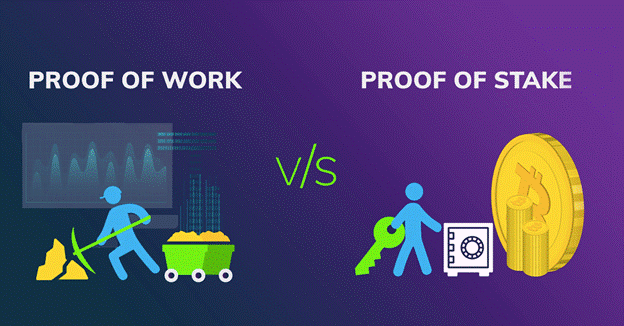
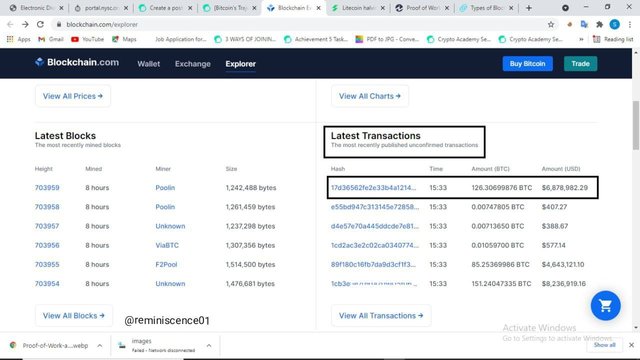
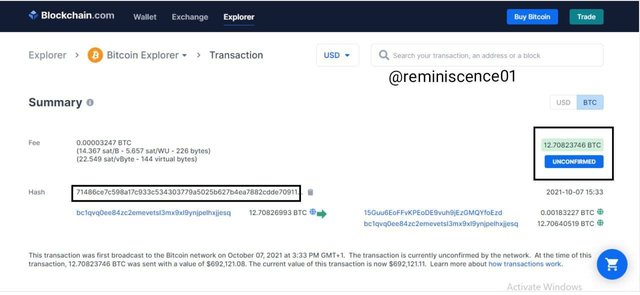
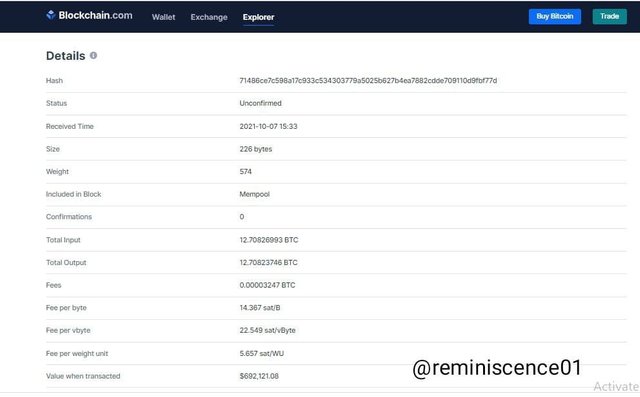
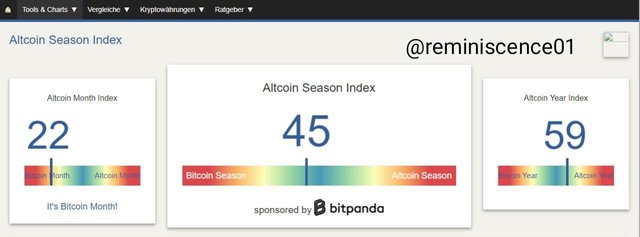

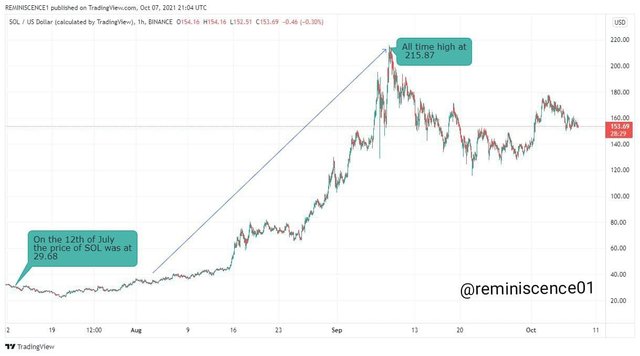
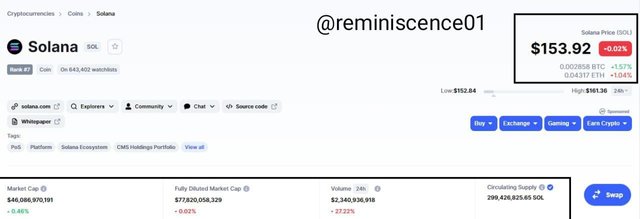
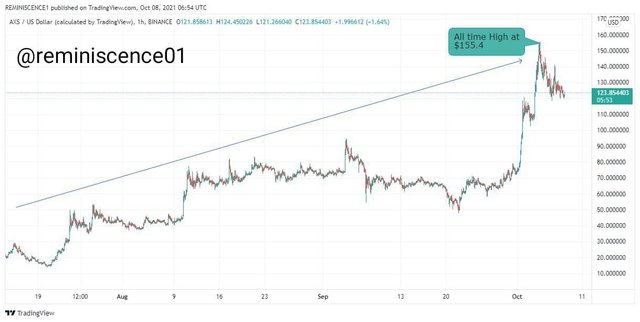
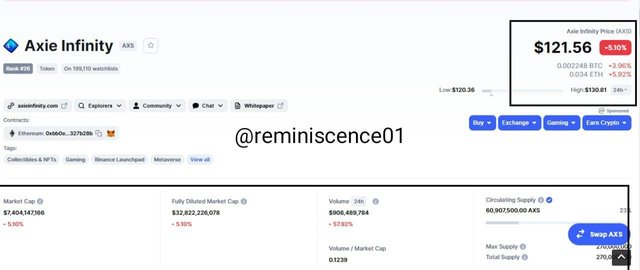
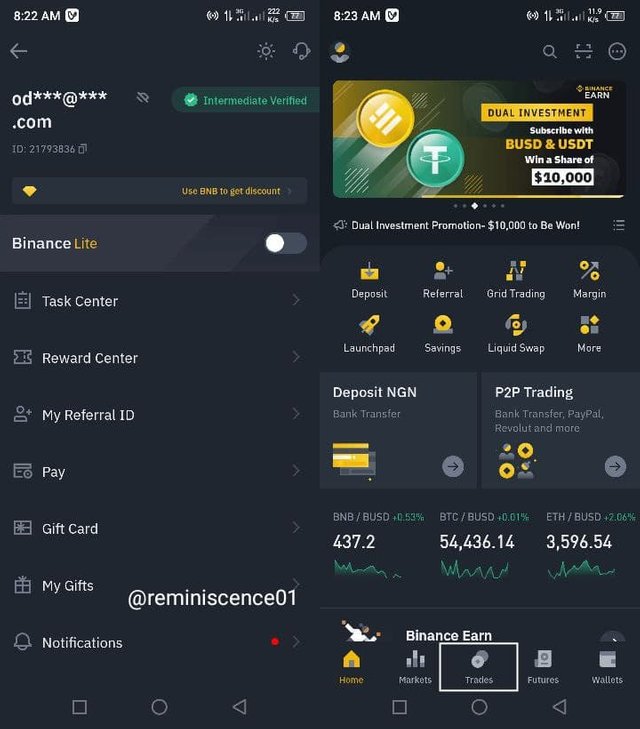
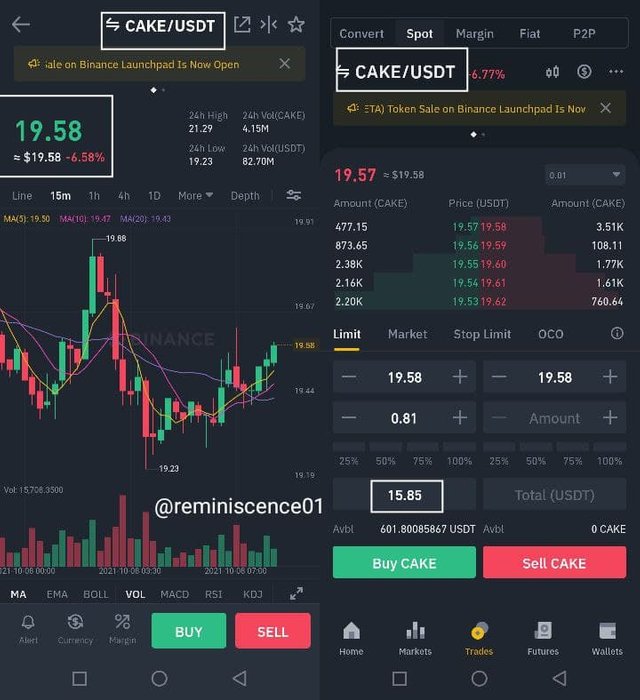
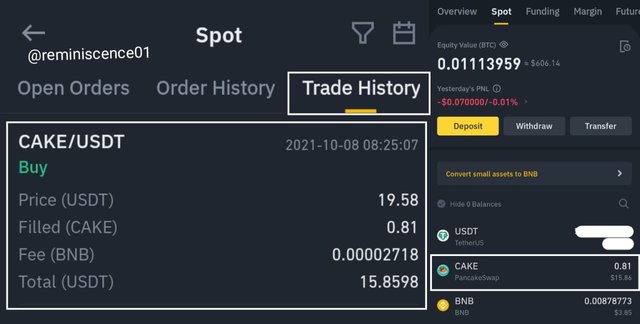
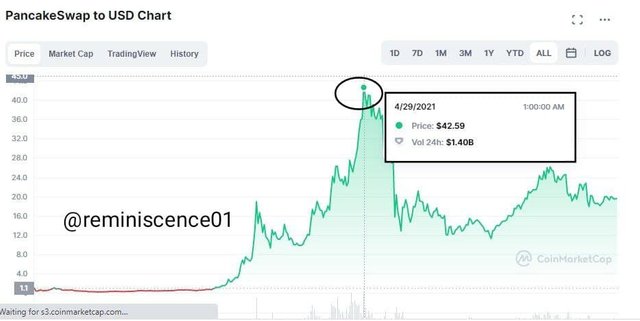
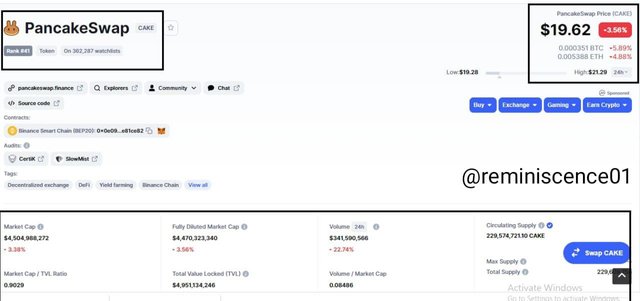
Congratulations! Your post has been selected as a daily Steemit truffle! It is listed on rank 21 of all contributions awarded today. You can find the TOP DAILY TRUFFLE PICKS HERE.
I upvoted your contribution because to my mind your post is at least 4 SBD worth and should receive 44 votes. It's now up to the lovely Steemit community to make this come true.
I am
TrufflePig, an Artificial Intelligence Bot that helps minnows and content curators using Machine Learning. If you are curious how I select content, you can find an explanation here!Have a nice day and sincerely yours,

TrufflePigGracias Profesor @reminiscence01 por participar en la Cuarta Temporada de la Steemit Crypto Academy.
Felicitaciones, espero seguir corrigiendo tus asignaciones.
Thank you @imagen.